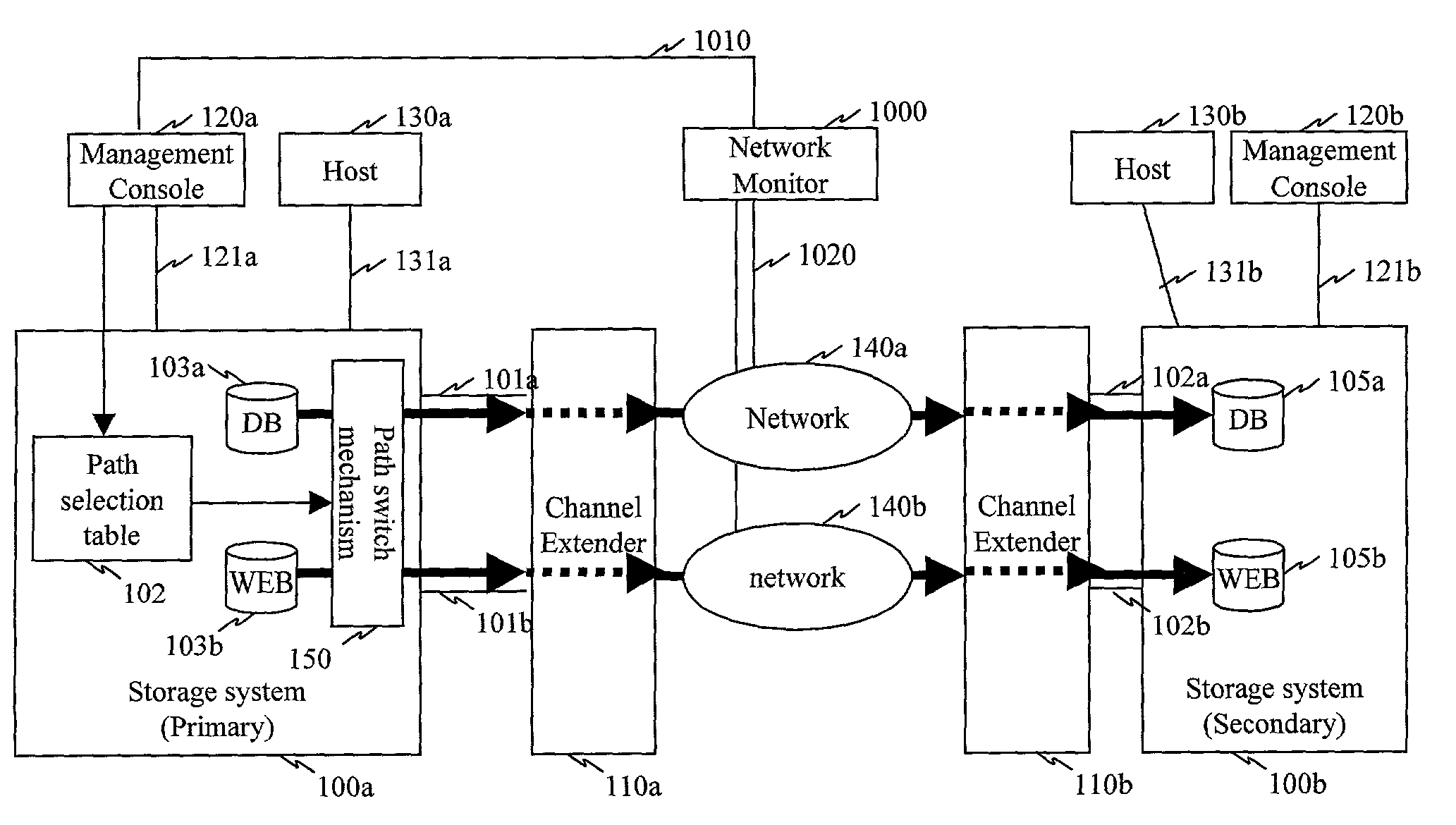Path selection methods for storage based remote copy
- Summary
- Abstract
- Description
- Claims
- Application Information
AI Technical Summary
Benefits of technology
Problems solved by technology
Method used
Image
Examples
implementation examples
[0065]The present invention will next be described with reference to examples of using some of the various functions and features of various specific embodiments thereof. This section is intended to be merely illustrative of some of the many ways that specific embodiments of the present invention can use constraints as described herein above. Note that these examples use only two networks of differing types, such as an expensive network and an inexpensive network, for clarity of explanation. However, as is apparent to those skilled in the art, many different configurations may be readily prepared using a variety of network types in accordance with various specific embodiments of the present invention.
[0066]FIG. 8 illustrates a flowchart of representative processing in an implementation that uses an expensive network below a particular throughput or busy rate in a specific embodiment of the present invention. In the example implementation shown in FIG. 8, an expensive network is used...
PUM
 Login to View More
Login to View More Abstract
Description
Claims
Application Information
 Login to View More
Login to View More - R&D
- Intellectual Property
- Life Sciences
- Materials
- Tech Scout
- Unparalleled Data Quality
- Higher Quality Content
- 60% Fewer Hallucinations
Browse by: Latest US Patents, China's latest patents, Technical Efficacy Thesaurus, Application Domain, Technology Topic, Popular Technical Reports.
© 2025 PatSnap. All rights reserved.Legal|Privacy policy|Modern Slavery Act Transparency Statement|Sitemap|About US| Contact US: help@patsnap.com



